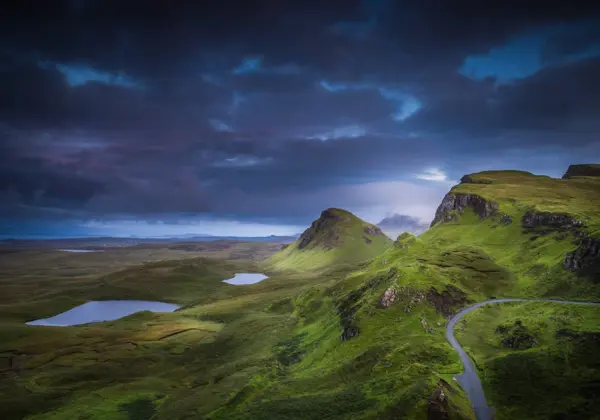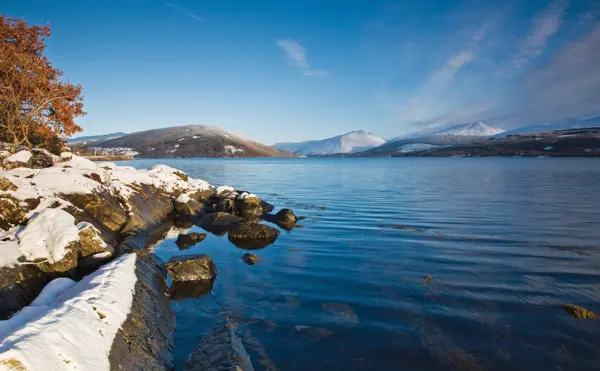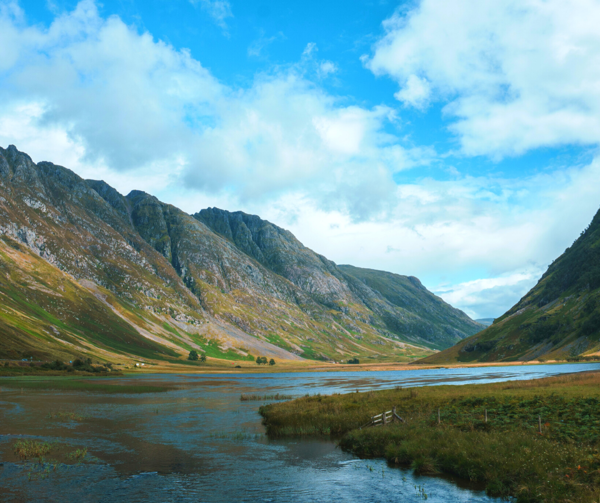What to Wear in Scotland: A Guide for All Seasons

Considering a hike through the Highlands or a cultural trip to the Lowlands? No matter what you’ve got planned on your travels, it’s essential to consider what to wear in Scotland to ensure you’re covered for all weather types. After all, Scottish weather is well-known for its changeable conditions so you’ll want to pack accordingly.
Of course, taking an umbrella and a raincoat in your suitcase is a no-brainer when it comes to visiting Scotland. It is true that Caledonia has its fair share of rainfall across all seasons, but you’re also likely to encounter sunny, dry days too and, depending on exactly which outdoor adventure activities you choose to undertake on your visit, trust us when we say layers are your new best friend.
Whether you're an avid hiker or a history enthusiast, there’s a good few essentials you’ll want to include on your packing list, and we’ve considered season as well as popular activities you’re likely to encounter around our widely located hotels and inns when drawing up this guide.
Scotland’s Climate and Seasons
Scotland is generally cooler than the rest of the British Isles, with an average temperature of around 18°C and fairly consistent rainfall across all seasons.
Between May and June is one of the best times to visit Scotland as you’re likely to avoid big crowds and are also more likely to enjoy a good few bright and breezy days. However, autumnal months can also be an interesting time to visit, especially if you plan on stopping by Edinburgh which is widely known for its dark and turbulent history. Expect chilly daytime temperatures and long, dark evenings.
Winter
December to February are considered winter months in Scotland. Weather can range from icy and snow-capped to drizzly rain and blustery weather, but you’re most likely to encounter blanketed snowfall by heading to the Caingorms for winter activities including skiing and snowboarding.

Spring
Early spring can struggle to shake off winter’s cooler temperatures, with rainfall prevalent and some snow spells not unheard of around March and April time. Towards the end of April tends to herald in warmer temperatures, with days becoming longer once again.
Summer
Scotland’s weather is often described as unpredictable so while temperatures do tend to rise from May onwards, you can never be sure whether you’ll need to unpack the umbrella or pull out the sunscreen. Temperatures can range from 15C to mid-20C.

Autumn
September can hold onto summer temperatures but as the month turns into October, you’ll start to feel the chill with longer nights and blasts of wind and rain.
What to Wear in Scotland in December-February
Whether you’re looking to explore Edinburgh’s Christmas Market or hit the snowy slopes of Aviemore or the Caingorms, look to pack a waterproof jacket, gloves, hat and scarf as essentials. Good footwear such as boots made from warm and waterproof materials are a necessity, particularly if you’re looking to explore off-the-beaten track.
Pack thermals for a warm base, followed by cosy jumpers or fleeces. Consider extra layers and waterproof trousers if you plan on adventures. Research dress codes for specific events, and pack a small umbrella – just in case!
What to Wear in Scotland in March and April
Scottish weather in March and April can be a fickle friend, so pack for adaptability. Layers are your best bet. Start with thermals for a warm base, then add light to mid-weight jumpers or turtlenecks.
Don't forget a waterproof jacket with a hood – rain showers are a frequent occurrence. For bottoms, choose comfortable jeans, water-resistant hiking trousers, or leggings. Sturdy shoes or boots with good tread are ideal, with waterproof options a wise choice for outdoor adventures.
Finally, pack a warm hat, scarf, and gloves, especially in March. As April brings milder temperatures, you can opt for lighter accessories.
What to Wear in Scotland in May and June
Scotland in May and June can start to see a rise in temperature, but pack with the understanding that the weather can still be unpredictable. Pack breathable t-shirts and long-sleeved shirts for layering and a light jumper or cardigan for chilly evenings.
While you might be tempted to pack just shorts and light dresses, especially in June, keep in mind unpredictable showers. Pack a pair of water-resistant walking trousers or jeans for comfort and practicality.
Sturdy shoes or boots with good tread are still a good idea, but lighter options can work for drier days. Don't forget a waterproof jacket – it's a Scottish essential! Finally, throw in a sunhat and sunglasses for those occasional sunny spells.
What to Wear in Scotland in July and August
July and August in Scotland offer the best chance for sunshine but be prepared for cool evenings and the occasional dose of unpredictable rain. Pack breathable t-shirts and tank tops for warmer days. A light jumper or cardigan is a good idea for evenings or sudden cool spells.
While you can finally pack shorts and light, summery dresses, don't forget the possibility of rain showers. Pack a pair of water-resistant walking trousers or jeans for changeable conditions. Comfortable shoes or lightweight boots with good tread are ideal. You can ditch the heavy waterproof coat and opt for a packable rain jacket instead.
Finally, embrace the sunshine with a sunhat and sunglasses – you might just get lucky and experience a true Scottish summer scorcher!
What to Wear in Scotland in September
September in Scotland is a beautiful transition month, offering the last gasps of summer alongside the crisp whispers of autumn. Packing for this in-between season requires a strategic layering approach.
Pack breathable t-shirts for warmer days, but don't forget long-sleeved shirts for cooler mornings and evenings. A light fleece or jumper becomes your best friend, providing warmth when needed. While you might still squeeze in a summer dress or light trousers on sunny days, pack water-resistant trousers or jeans for comfort and the ever-present possibility of rain.
Sturdy shoes or boots with good tread are still ideal, but lighter options can work for drier days. A waterproof jacket remains a must-have in Scotland, so pack a reliable one.
Don't forget a scarf and a beanie for those occasional chilly mornings and evenings.
What to Wear in Scotland in October - November
Prepare for cooler temperatures and a higher chance of rain as autumn hits. Pack thermals for a warm base layer, alongside comfortable jumpers and fleeces. A waterproof jacket with a hood is crucial for the frequent showers.
Ditch the summer dresses and shorts – opt for jeans or water-resistant hiking trousers to keep comfortable and dry. Sturdy boots with good tread are essential for exploring Scotland’s diverse landscapes.
Don't forget a warm hat, scarf, and gloves – these accessories will be your best friends against the crisp autumn air. A small umbrella is also essential for those unpredictable downpours.
Crerar Hotels: Your Gateway to Scotland
Our Hotels and Inns in Scotland are conveniently located throughout the most scenic areas and are ideally situated for your adventures.
No matter which gorgeous hotel you choose to experience, there is something magical for you to do nearby before unwinding in a comforting, luxury hotel that will cater to your every need.
Explore More of Scotland
Discover more wonderful things to do in Scotland, and continue reading:
- Find the finest sightseeing spots Perthshire has to offer
- Explore the best things to do in Glencoe for adventurous travelers
- Discover the great outdoors with our best Scottish adventure activities to explore
- Go for a scenic drive with our guide to the best road trips in Scotland
Awards







